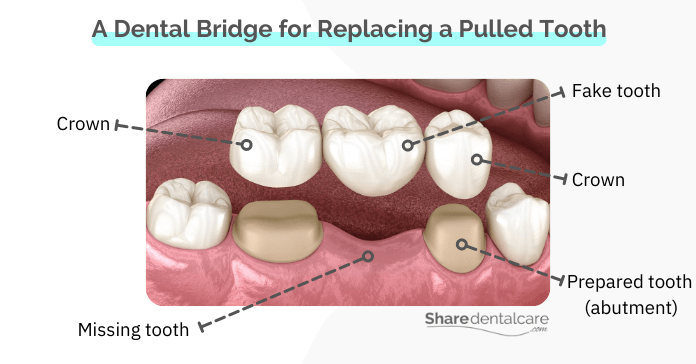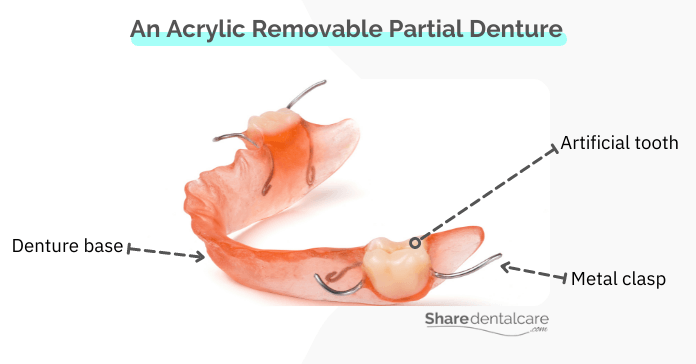Your dentist may recommend pulling a tooth as a treatment option when it is badly decayed or infected. But pulling a tooth can affect your ability to chew and can leave a gap in the smile. So, your dentist will recommend some treatment options for replacing the pulled tooth. There are three different options for replacing a pulled tooth, including dental implants, fixed bridges, and removable dentures. We will discuss in detail each option.
Why You May Need a Tooth Pulled?
Your teeth help you eat, speak, and smile with confidence. A tooth is a natural part of your body that can be healthy or diseased. Sometimes, your dentist may recommend pulling a tooth for the following reasons:
- The tooth is severely decayed.
- Tooth infection that can’t be treated by root canal treatment.
- Loose teeth due to periodontal disease.
- The tooth has extensive damage due to injury.
- Impacted teeth.
Tooth loss can cause difficulty chewing food, which can affect your nutrition and overall health. Also, tooth loss can make it difficult to talk clearly or smile confidently, which can affect your social life and self-esteem. So, your dentist will discuss with you the different types of teeth replacement.
Treatment Options for Replacing a Pulled Tooth
There are three treatment options for replacing a pulled tooth include dental implants, fixed bridges, and removable dentures. Each option has benefits and drawbacks, which you need to consider while choosing the best treatment option.
Dental Implants – The Best Option for Replacing a Pulled Tooth
Dental implants are titanium posts that are surgically placed in the jawbone. They fuse with the jaw bone (osseointegration), providing solid support for crowns, bridges, or dentures. Dental implants can be made from titanium or zirconia.
Dental implants are the best treatment option for replacing a pulled tooth because they are strong, durable, and can last for a lifetime with proper care. The jaw bone begins to lose its height and width after pulling a tooth due to the loss of chewing forces on that area. Dental implants can prevent jaw bone loss because they mimic the function and appearance of natural teeth.
However, Implants are very expensive in comparison with other options. Also, they require surgery and sufficient bone for placement.

Dental Bridges – a Common Option for Replacing a Pulled Tooth
Fixed bridges consist of 2 or more crowns and a fake tooth in between. The false tooth (pontic) fills the missing tooth gap. The crowns are cemented to the adjacent teeth (abutments) for support. There are different bridge types in dentistry.
Dental bridges are considered a good treatment option for replacing a pulled tooth because they restore your smile and your ability to chew food and speak clearly. They are strong and durable. Bridges are less expensive and invasive than dental implants.
However, fixed bridges require the reduction of adjacent teeth (abutments), which can cause damage to them. They don’t prevent bone loss like implants. Fixed bridges are not suitable for people who have no teeth on either side of the gap. Read more about fake tooth bridges.

Removable Partial Dentures – an Affordable Option
Removable partial dentures (RPD) are made up of artificial teeth, gum-colored acrylic bases, and clasps that attach them to the adjacent natural teeth.
RPDs are considered an affordable option for replacing a pulled tooth because they are less expensive than dental implants or fixed bridges. They are also more convenient to use and maintain. Learn more about the pros & cons of a single molar denture.
However, RPDs can slip out of place while eating or speaking. They are not as aesthetic, durable, or strong as dental implants and fixed bridges. Removable dentures require some maintenance work (cleaning, relining) at regular intervals.

How to Choose the Best Option?
Your dentist will evaluate your needs and preferences to determine which of the three treatment options is best for you. You should discuss all factors that are important to you as an individual, such as cost, convenience, appearance, function, and lifestyle. The choice of treatment should be based on your own opinion. Read more about a removable denture or fixed bridge for one missing tooth.
Replacing a Pulled Tooth – Conclusion
The three different treatment options for replacing a pulled tooth include dental implants, fixed bridges, and removable dentures. Each option has benefits and drawbacks that you need to consider before choosing the best one for your situation.
Dental Implants are considered the best solution because they have been proven to be strong, durable, and can last a lifetime if properly cared for. Fixed bridges are durable, strong, and don’t require invasive surgery. Removable dentures are an affordable option for replacing a missing tooth.